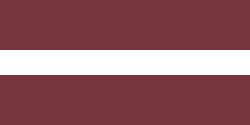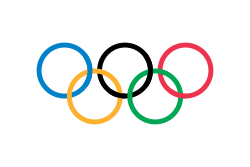Kælk under vinter-OL 2018 – Hold
| Holdkonkurrenc under olympiadens lege | |||||||||||||
|---|---|---|---|---|---|---|---|---|---|---|---|---|---|
 | |||||||||||||
| Sted | Alpensia Sliding Centre nær Pyeongchang, Sydkorea | ||||||||||||
| Datoer | 15. februar | ||||||||||||
| Atleter | 52 fra 13 nationer | ||||||||||||
| Vindertid | 2:24.517 | ||||||||||||
| Medaljevindere | |||||||||||||
| |||||||||||||
Holdkonkurrencen i kælk ved vinter-OL 2018 blev afholdt den 15. februar 2018 i Alpensia Sliding Centre nær Pyeongchang, Sydkorea.[1]
Resultater
Eventet blev afholdt den 21:30.[2]
| Nr. | Startnr. | Udøvere | Natipn | Single kvinder | Single mænd | Dobbel mænd | Totalt | Efter |
|---|---|---|---|---|---|---|---|---|
| 13–1 13–2 13–3 | Natalie Geisenberger Johannes Ludwig Tobias Wendl / Tobias Arlt | 46.870 | 48.822 | 48.825 | 2:24.517 | — | ||
| 11–1 11–2 11–3 | Alex Gough Samuel Edney Tristan Walker / Justin Snith | 47.099 | 48.820 | 48.953 | 2:24.872 | +0.355 | ||
| 12–1 12–2 12–3 | Madeleine Egle David Gleirscher Peter Penz / Georg Fischler | 47.122 | 48.758 | 49.108 | 2:24.988 | +0.471 | ||
| 4 | 10–1 10–2 10–3 | Summer Britcher Chris Mazdzer Matthew Mortensen / Jayson Terdiman | 47.266 | 48.660 | 49.165 | 2:25.091 | +0.574 | |
| 5 | 9–1 9–2 9–3 | Andrea Vötter Dominik Fischnaller Ivan Nagler / Fabian Malleier | 47.078 | 48.827 | 49.188 | 2:25.093 | +0.576 | |
| 6 | 8–1 8–2 8–3 | Ulla Zirne Kristers Aparjods Andris Šics / Juris Šics | 47.369 | 48.891 | 49.055 | 2:25.315 | +0.798 | |
| 7 | 7–1 7–2 7–3 | Ekaterina Baturina Roman Repilov Alexander Denisyev / Vladislav Antonov | 47.523 | 48.615 | 49.211 | 2:25.349 | +0.832 | |
| 8 | 5–1 5–2 5–3 | Ewa Kuls-Kusyk Maciej Kurowski Wojciech Chmielewski / Jakub Kowalewski | 47.711 | 49.134 | 49.568 | 2:26.413 | +1.896 | |
| 9 | 6–1 6–2 6–3 | Aileen Frisch Lim Nam-kyu Park Jin-yong / Cho Jung-myung | 47.211 | 49.854 | 49.478 | 2:26.543 | +2.026 | |
| 10 | 4–1 4–2 4–3 | Raluca Strămăturaru Valentin Crețu Cosmin Atodiresei / Ștefan Musei | 47.097 | 49.609 | 50.138 | 2:26.844 | +2.327 | |
| 11 | 2–1 2–2 2–3 | Katarina Šimoňáková Jozef Ninis Marek Solčanský / Karol Stuchlák | 48.032 | 49.326 | 49.635 | 2:26.993 | +2.476 | |
| 12 | 3–1 3–2 3–3 | Tereza Nosková Ondřej Hyman Lukáš Brož / Antonín Brož | 48.238 | 49.178 | 49.645 | 2:27.061 | +2.544 | |
| 13 | 1–1 1–2 1–3 | Olena Shkhumova Anton Dukach Oleksandr Obolonchyk / Roman Zakharkiv | 51.503 | 49.135 | 50.365 | 2:31.003 | +6.486 |
Referencer
- ^ "Venues". www.pyeongchang2018.com/. Pyeongchang 2018 Olympic Organizing Committee for the 2018 Winter Olympics. Arkiveret fra originalen 17. februar 2018. Hentet 26. december 2017.
- ^ Final results
Eksterne henvisninger
Medier brugt på denne side
An icon that represents a gold medal
An icon that represents a silver medal
National flag of Canada. This file uses RGB specifications, resulting in a brighter red than the Pantone colors recommended by the Canadian government. Even a CMYK printed material cannot render such a red (see explanation in talk page).
An icon that represents a bronze medal
Flag of Austria with the red in the Austrian national colours which was official ordered within the Austrian Armed Forces (Bundesheer) in the characteristic “Pantone 032 C” (since May 2018 the Red is ordered in the characteristic “Pantone 186 C”.)
Olympic Movement flag
Proportions 2:3, created 1913, adopted 1914, first used 1920.
- Colors as per http://fairspielen.de/wp-content/uploads/2015/09/Annexe-3-Olympism_and_the_Olympic_Symbol_-_Principles_and_Usages_Guide-1.pdf
- blue: PMS 3005C
- yellow: PMS 137C
- black: PMS 426C
- green: PMS 355C
- red: PMS 192C
- Dimensions of the rings taken from http://fairspielen.de/wp-content/uploads/2015/09/Annexe-3-Olympism_and_the_Olympic_Symbol_-_Principles_and_Usages_Guide-1.pdf
Olympic Rings without "rims" (gaps between the rings), As used, eg. in the logos of the 2008 and 2016 Olympics. The colour scheme applied here was specified in 2023 guidelines.
Olympic Rings without "rims" (gaps between the rings), As used, eg. in the logos of the 2008 and 2016 Olympics. The colour scheme applied here was specified in 2023 guidelines.
Pictograms of Olympic sports - Luge














